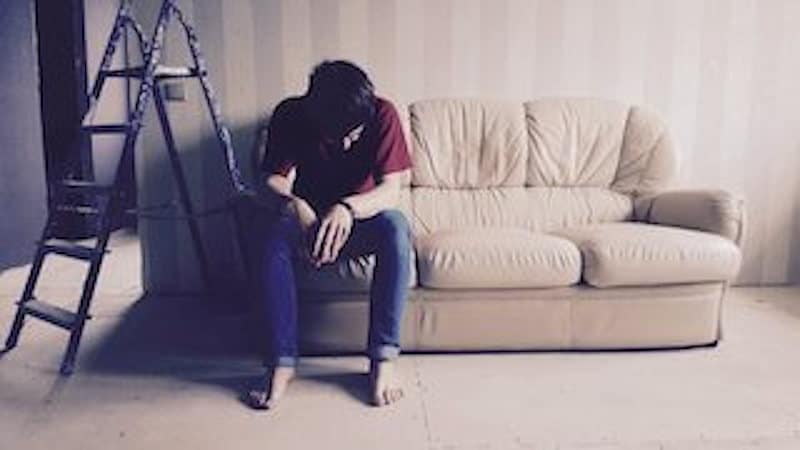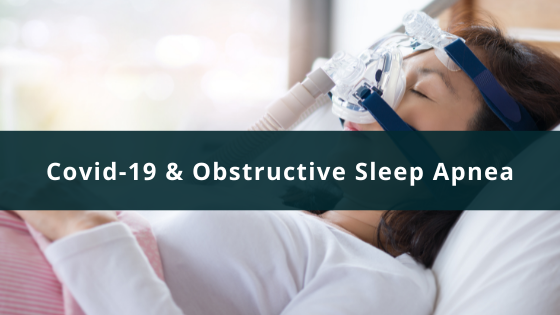Time to Bridge the Gap – A Look at Post Infectious Syndrome
by Dr. Andrew Pugliese
For the past several decades it has been well documented that certain infections can lead to prolonged debilitating syndrome with fatigue and pain being the hallmark of a postinfectious syndrome.1 In many of these instances poor or fragmented sleep is associated with the syndrome.2 Many of these patients complain of these symptoms for years but no cure is able to be achieved. These patients are often dismissed as being hypochondriacs or depressed requiring psychiatric care.
Over the last two decades, it has been postulated that alterations in sleep patterns may be a contributing factor to this syndrome.3 It is well-known that improper sleep has a negative effect on the immune system making it difficult for the body to maintain health and well-being.4 Also by addressing these abnormal sleep patterns it is possible to finally achieve, if not a cure, better management of the syndrome.
Below we describe a patient who was diagnosed with viral encephalitis three years ago who was debilitated up until this past winter and is doing remarkably well after identify and treating his underlying sleep abnormality.
Case Report:
A forty-four-year-old male presented with blood-to-blood contact with an AIDS patient three years ago. The patient tested negative for HIV after the incident in December 2007. The patient started experiencing “a sense of burning inside the brain” and flu-like symptoms a month later. This was accompanied with night sweats, muscle pain, sore throat, skin discoloration, and a twenty-pound weight loss.
By February 2008 he also started developing neurological symptoms, poor coordination and balance, papillary eruptions, intense night sweats, and insomnia. In March 2008 he visited an infectious disease specialist at a pain clinic who prescribed 30 mg of morphine three times a day for the pain that was non-productive. By this time the patient could barely walk. Doctors believed that the patient had contracted a mutated retrovirus that was never identified.
In April 2008 the patient experienced persistent headaches, hypertonic spasms, shaky legs, and respiratory failure. The patient was hospitalized and then prescribed physical therapy. Over three months of physical therapy allowed him to regain his ability to walk, but his pain still persisted. He was then prescribed Ambien (zolpidem) and Lunesta (eszopiclone) help with the sleep disturbances but was still only sleeping 2-3 hours per night.
In June 2008 the patient experienced sensory neural hearing loss in his left ear. His muscle spasms and general malaise continued. He was not able to experience any sensations during sexual activity during this time period. The patient was prescribed Klonopin (clonazepam) for his spasms, which did give some relief. He also experienced pus-filled boils on his back and buttocks.
In August 2008 he visited a tertiary care center for his insomnia and was prescribed CPAP therapy after a sleep study. Although his motor abilities improved, his other symptoms continued and he was sent to another tertiary care center for evaluation. They diagnosed him with an unknown viral syndrome after seeing several specialists and the patient was sent home. He also experienced numerous oral health issues including mouth ulcers and sleuthing of gum tissue.
By January 2009 the patient’s insomnia was still unresolved and he developed bacterial bronchitis, which was treated with Levaquin (Levofloxacin) at 750 mg for two weeks. In February 2009 the patient developed ringworm that was treated with betamethasone disproportionate cream. During this time the patient still experienced persistent headaches, was unable to obtain adequate sleep, and was experiencing painful swollen lymph nodes.
The patient changed his diet and began eating only organic vegan foods. He also supplemented his diet with multivitamins, probiotics, and other immune strengthening supplements. During this time the patient’s lesions lessened although his average body temperature dropped to around 95.3oF. He was referred to me and I ran immune profiles plus IgG subsets, all which were found to be normal and completed another sleep study. The results of the sleep study clearly showed that the patient was experiencing severe alpha-delta intrusion.
His neurologist, who was working together with me on this complex case, prescribed the patient 30 mg of Prozac (fluoxetine) each morning and 100 mg of trazodone every night to compensate for the serotonin deficiency that his neurologist diagnosed. This therapy plus Lunesta 2mg at night and CPAP therapy finally gave the patient the relief he was seeking. The patient began sleeping normally, his periodontitis healed, and all other symptoms that the patient was experiencing also disappeared. The patient is now able to live a normal life and exercise regularly, including training for a triathlon.
Discussion:
Apparently, our grandparents were correct in understanding the potential of sleep as a preventative and curative agent against infectious diseases. Understanding and managing alpha-delta intrusion are not without controversy. It has been seen in several disease syndromes including Fibromyalgia and Chronic Fatigue Syndrome.5,6 It has also been seen in rheumatological diseases such as rheumatoid arthritis and systemic lupus erythematosus.7,8 One small study demonstrated that nearly one-third of patients with chronic disseminated Lyme disease were found to have alpha intrusion.9
To learn more about Lyme disease check out this article.
Alpha-delta intrusion is a non-specific finding found in patients with fibromyalgia, Chronic Fatigue Syndrome and Rheumatoid arthritis.10,11,12 It has been seen in patients with fibrositis syndrome after a febrile illness.13 Many patients report generalized fatigue and malaise after a febrile illness similar to what is seen in Fibromyalgia and CFS.14
Over the past three decades, there have been many labels associated with this syndrome, they include; infectious neuromyasthenia, Iceland disease, Royal Free disease, benign myalgic encephalomyelitis, epidemic neuromyasthenia, and Chronic Epstein-Barr syndrome.15 As already stated, similar patterns have been described in post-therapy Lyme patients. Unfortunately, histological evidence has been inconsistent thereby making an infectious etiology less than favorable.15
Abnormal sleep has been associated with several alterations of the immune system. A decrease in antibody response has been seen in sleep-deprived subjects after receiving either Hepatitis A or Influenza A vaccine.16,17 Sleep deprivation has been known to increase IL-1, TNF-alpha and interferon levels.18,19 In conclusion sleep appears to be a modulator of both the humoral and cellular response of the immune system.
Animal models have demonstrated the importance of sleep after an infectious challenge. Higher survival rates were seen in rabbits that had a robust NREM response to an infectious challenge than those that did not.20
Though alpha-delta intrusion is a non-specific finding it is a biological indicator of sleep arousal that is found in many patients who present with symptoms of fatigue after a febrile illness. Very much like ESR or CRP both of which are non-specific yet, infectious disease specialists use these tools as a sensitive marker in the management of such illnesses as osteomyelitis and endocarditis.
Trazadone has been shown to help people with sleep disturbances similar to what is seen with the alpha-delta intrusion. It has been shown to increase total sleep time, slow wave sleep and sleep efficiency. Also, Trazadone has been shown to decrease stage 1 and 2 sleep. Similar to patients that suffer from Fibromyalgia and Chronic Fatigue Syndrome they have a disproportionate increase in stages 1 and 2.
The addition of Prozac was to assist the patient with his sleep apnea. Prozac has been shown to improve sleep latency in patients with sleep apnea. As with all chronic illnesses, clinical correlation is vital and important. Not all patients that present with pain after a febrile illness suffers from alpha-delta intrusion. That being said each case needs to be addressed and examined in a unique way, just as every patient is a unique individual.
There are many patients who suffer from post-infectious syndrome who after many years give up and believe that this is a good as it gets. I believe that it is time to bridge the gap between sleep medicine and infectious disease in order to help such patients as described in this paper.
References:
1 Smythe HA, Moldofsky H. Two contributions to understanding of the “fibrositis” syndrome. Bull Rheum Dis. 1977;28:928-931.
2 Smythe HA. Tender points: evolution of concepts of the fibrositis/fibromyalgia syndrome. Am J Med. 1986;(suppl 3A)81:2-6.
3 Komaroff AL. Chronic fatigue syndromes: Relationships to chronic viral infections. J Virol Methods. 1998;21:3-10.
4 Krueger JM, Majde JA. Microbial products and cytokines in sleep and fever regulation. Crit Rev Immunol. 1994;14:355-379.
5 Branco J, Atalaia A, Paiva T. Sleep cycles and alpha-delta sleep in fibromyalgia syndrome. J Rheumatology. 1994;21:1113-1117.
6 Manu P, Lane TJ, Mathews Castriotta RJ, et al. Alpha-delta sleep in patients with a chief complaint of chronic fatigue. South Med J. 1994;87:465-470.
7 Moldofsky H, Lue FA, Smythe HA. Alpha EEG sleep and morning symptoms in rheumatoid arthritis. J Rheumatol. 1983;10:373–379.
8 Anch AM, Lue FA, MacLean AW, et al. Sleep Physiology and psychological aspects of the fibrositis (fibromyalgia) syndrome. Can J Psychol. 1991;45:178-184.
9 Greenberg HE, Ney G, Scharf SM, Ravdin L, Hilton E. Sleep quality in Lyme disease. Sleep. 1995 Dec;18(10):912-916.
10 Branco J, Atalaia A, Paiva T. Sleep cycles and alpha-delta sleep in fibromyalgia syndrome. J Rheumatol. 1994:1113–1117.
11 Van Hoof E, De Becker P, Lapp C, Cluydts R, De Meirleir K. Defining the occurrence and influence of alpha-delta sleep in chronic fatigue syndrome. Am J Med Sci. 2007;333:78–84.
12 Moldofsky H, Lue FA, Smythe HA. Alpha EEG and morning symptoms in rheumatoid arthritis. J Rheumatology. 1983;10:373-379.
13 Wolfe F. The clinical syndrome of fibrositis. Am J Med. 1986;(suppl 3A)81:7-14.
14 Whelton C, Saskin P, Salit I, Moldofsky H. Post-viral fatigue syndrome and sleep. Sleep Res. 1988;17:307.
15 Moldofsky H, Saskin P, Lue FA. Sleep and symptoms in fibrositis syndrome after a febrile illness. J Rheumatol. 1998 Nov;15(11):1701-1704.
16 Pope M, Marsden PA, Cole E, et al. Resistance to murine hepatitis virus strain 3 is dependent on production of nitric oxide. J Virol. 1998;72:7084-7090.
17 Toth LA, Rehg JE, Webster RG. Strain differences in sleep and other pathophysiological sequelae of influenza virus infection in naïve and immunized mice. J Neuroimmunol. 1995;58:89-99.
18 Alam N, McGinty D, Imeri L, et al. Effects of interleukin-1 beta on sleep- and wake-related preoptic anterior hypothalamic neurons in unrestrained rats. Sleep. 2001;24:A59.
19 Yoshida H, Peterfi Z, Garcia-Garcia F, et al. State-specific asymmetries in EEG slow wave activity induced by local application of TNFa. Brain Res. 2004;1009:129-136.
20 Toth LA, Tolley EA, Krueger JM. Sleep as a prognostic indicator during infectious disease in rabbits. Proc Soc Exp Biol Med. 1993;203:179-192.[/su_expand]







